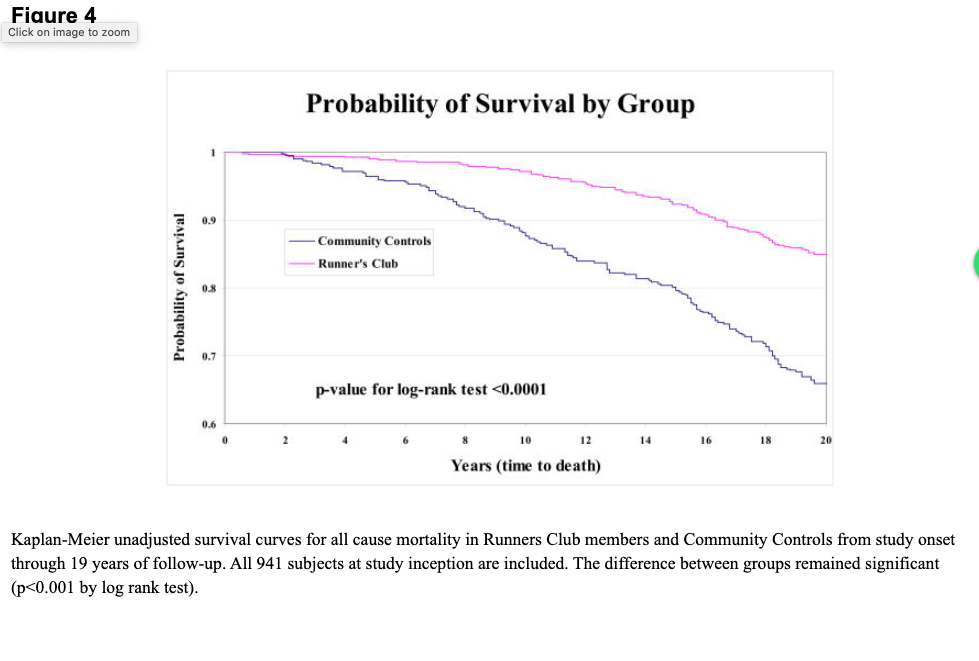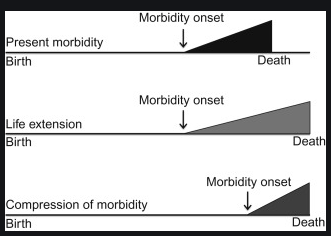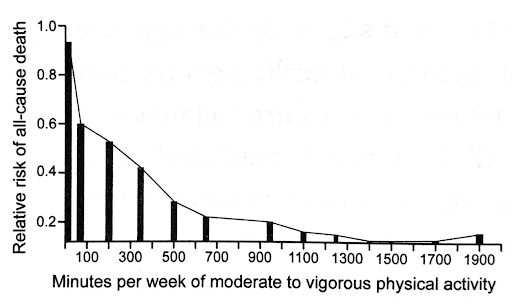This is a phrase coined by those who have concerns about the harm of aerobic exercises, but what do you need to know about it? I’m here to help you make sense of it.
An element of one of my books, the Metabolism Reset Diet, was the benefits of limiting exercise while you are eating low-fuel (Click Here: Grab a copy today). Otherwise, the benefits of exercise are helpful. That can seem confusing if you look at it superficially. So when it comes to topics surrounding exercise, I am always invested in helping add clarity to terms you may have heard before.
So, chronic cardio — is it a concern? Should you be afraid of exercise? Here’s the background and the data to help clear things up.
Product Recommendation: The Daily Reset Shake helps boost your immune through healthy protein, micronutrients and resistant starch. Click Here
Why Is Chronic Cardio A Concern?
The concerns around chronic cardio are certainly plausible. After all, it doesn’t feel good when you are pushing yourself too hard, for too long.
You may even feel pain in the heart when you’re overworking it, there can be high cortisol levels, and exercise makes oxidative stress as well as inflammation (Read More: Should you be blaming oxalates for inflammation in your body?)
For that reason, I totally understand how it can be so easy to think that all these are the risks of exercise. And, therefore, the cumulative effects of them would be even worse.
The Truth About Chronic Cardio
As a generalization, all the things mentioned above are true, but they are missing a pretty big piece of this puzzle: hormesis.
What we know is that there are a lot of things that can be a little bit bad for us, but are helpful and make us stronger (we also call this ‘antifragile’).
- Raises inflammation
- Causes oxidative stress
- Shuts down the immune system
- Stops fat-burning temporarily
But, and this is a big one, all those things are better when we adapt to exercise. They are all things we can better accommodate, which leads to less inflammation and to where we can better stop our own free radical damage.
On top of that, we have healthier immune responses, and we can do a better job of burning fat. In short, all those things that are bad about it become good about it!
When it comes to exercise and health, the more we adapt to it, the more these challenges become positive opportunities for us.
Where Did Chronic Cardio Originate?
Let’s widen our lens a little bit and consider how this concept of chronic cardio came about. In fact, there is one study that has contributed a great deal to this discourse.
This one study looked at a group of marathon runners that had higher coronary artery calcium scores. By and large, that does predict cardiovascular disease.1
What this led to was that this study has been held up quite commonly to say that, those who train frequently, are actively damaging their hearts.
But, there are a couple interesting things at play here. First is that, on closer analysis, it was noted that more than half of the marathoners in this study were former smokers (Read More: Are you secretly smoking?).
And, I don’t mean one or two puffs, but fairly intense smokers! This is one signal that raised some eyebrows, but once you looked at each runner, one by one, the truth became apparent.
Due to various factors, their risk scores for cardiovascular disease were already quite high. This is to say that the deck was already kind of stacked against them.
But, it also turned out that they did have visible plaque, but on further analysis they had lower than expected risks of cardiovascular events.
Other Data Points
The other major data point has been about immune response. There have been several studies showing that people who participate in large events, like an iron man triathlon, are more apt to have respiratory problems after the events.
That has been thought to validate the idea that the effort you put into the event weakens your immune system. While it is plausible enough, especially when you think of the physical toll of a triathlon, it seems intuitive to think your immune system would take a toll, too.
On closer inspection, though, we need to think about this a little harder.
Let’s say you go to a big event, there are a lot of variables at play. One of those variables is the fact that you exert a massive amount of your body’s energy.
Then, you have to take into account travel, change of timezones, putting yourself in huge crowds of people, and you are disrupting your sleep.
A lot of factors are there that could just as easily explain upper respiratory illness. So, it isn’t simply the triathlon, but all the logistics that get you there.
What About Troponin?
You may have heard about troponin before. Troponin is a market that shows up in your body when heart cells are damaged.
There have been studies showing that endurance athletes, in the midst of a real hard training bout, have high levels of troponin.2
This has led many to believe that they are damaging their heart in that moment. What we know, though, is that troponin is a market of cell turnover, but when training, it does not correlate with damage.
In fact, there is no relationship with cardiac outcomes, like heart attacks, that there is no risk above what you might find in control groups.
How Does It Compare?
Another study wanted to compare what happens to someone who goes and runs a marathon, versus someone who merely attends a convention.
As above, you have a lot of those same variables when you attend a trade show or convention, save for running a marathon or triathlon!
It turns out that those who go to a convention, they have an even higher rate of respiratory infection compared to those who run the marathon.
How Much Exercise Is Too Much?

That is really what I want to convey in today’s article. You don’t have to lose your love of aerobic activities, like running, cycling, training, or endurance sports.
But, even though you might think you’re doing the best thing for your body, you not only lose that passion, but you may suffer health outcomes such as:
- A loss of energy
- Poor weight management
So, you may have tried to stop any potential risks of exercise by quitting it altogether. But what I am here to tell you is that you do not have to worry about it.
The dangers of chronic cardio simply are not true. But, in order to illustrate that point, I want to dive into what we know about exercise and lifespan.
Do Athletes Suffer Due To Chronic Cardio?
So, let’s talk about outcomes. Given that we have many people who would consider themselves endurance athletes, what can we learn from what has really happened?
Do these athletes have more chronic disease? Do they die younger? This would be an ideal place to start, especially if we were concerned about chronic cardio being a real threat.
Here is what we know so far…
In terms of exercise and lifespan (life expectancy), we see that athletes have a life expectancy of 2.8 to 8 years longer than non-athletes.3 That is a pretty substantial difference!
We also see that overall life expectancy correlates, in a good way, with more exercise. One big data point out of Northern California is of particular interest here.
This came from a running club who compared longevity, but also disability, to a large group of 538 members, versus 423 non-members (but in the same demographics), over a couple decades.4

There was also a super great study out of Finland surveying around 2,600 athletes.5 They were broken down into the following athletic categories:
- Power athletes
- Team athletes
- Endurance athletes
What they say was that when you compared this group to the same size of ‘regular’ people, all of the athletes lived a whole lot longer. And, of all these athletes, the endurance category of athletes had the great benefits.
Why Do Endurance Athletes Live Longer?
Based on the data above, why would endurance athletes live longer than their peers in the ‘power’ and ‘team’ categories? Well, it comes down again to the data.
A large study in 2001 showed that our ability to use oxygen is one of the biggest factors determining how likely we are to suffer from early death.6
This study showed that our VO2 max, our efficiency of oxygen, was one of the biggest drivers of dying at any given age.
Basically, endurance athletes are constantly training their VO2 max. That is what they get better at, which leads to, as per this study (in the chart below), a 43% lower risk of death.

What we see is that this idea of endurance athletes has been called the ‘compression of morbidity’ theory. Those that are physically active will have a later death.
But, it will not only extend life, but it will compress the time in which you experience mobility (essentially poor-quality years).
Endurance athletics extends your lifespan, while shortening the years of morbidity. Death is a certainty, of course, but you will effectively live longer and feel younger for longer, too.
Exercise and Health: How Much Is Best?
First, I would love for your main takeaway from this article to be that chronic cardio is not only nothing to worry about, but not a concern at all.
What we can see from the science and the studies above is that endurance athletes are not only helping their bodies get better, but extending their lives at the same time.
Therefore, due to the principles of antifragility, even the ‘bad’ things occurring in our body at the time of exercise turn into good things down the road. That’s just the way we’re wired.
But, how much exercise is helpful and what point does it potentially become dangerous?
A lot of the popular recommendations say that you should consider doing 150 minutes per week. The chart below shows how that little amount can make a big difference…

Here is an image that comes to us from an excellent book called “Exercised” by Daniel Lieberman.7 In it, he shows how the minutes per week of cardio correlates with risk of all-cause mortality…

At 700 minutes per week, you can see about a 20% of all-cause death. This means that you are five times less likely to die from any cause.
And, at 1500 minutes per week, we have totally flatlined. Daniel even notes in his book that the minor blip at 1900 is likely only that: a blip.
Is Too Much Exercise Dangerous?
Many have this idea that, if you exercise for too long, it raises your risk more than it would if you didn’t exercise. That exercise has a J-shaped curve where too much becomes harmful.
While there certainly can be a point where if you do too much, too fast, that it can lead to undue stress on your body.
But, if you are adapting to it over time, this trend doesn’t exist. There is no reason to be frightened, and all the reason to have fun!

P.S. Whenever you are ready, here is how I can help you now:
1. Schedule a complimentary consultation with one of my team of naturopathic doctors. This is a great starting point for assessing your unique health needs and treatment options.
2. Download and use my Favorite Recipes Cookbook Here
3. Check out my podcast Medical Myths, Legends, and Fairytales Here
Dr. Alan Glen Christianson (Dr. C) is a Naturopathic Endocrinologist and the author of The NY Times bestselling Adrenal Reset Diet, The Metabolism Reset Diet and The Thyroid Reset Diet.
Dr. C’s gift for figuring out what really works has helped hundreds of thousands of people reverse thyroid disease, lose weight, diabetes, and regain energy. Learn more about the surprising story that started his quest.



